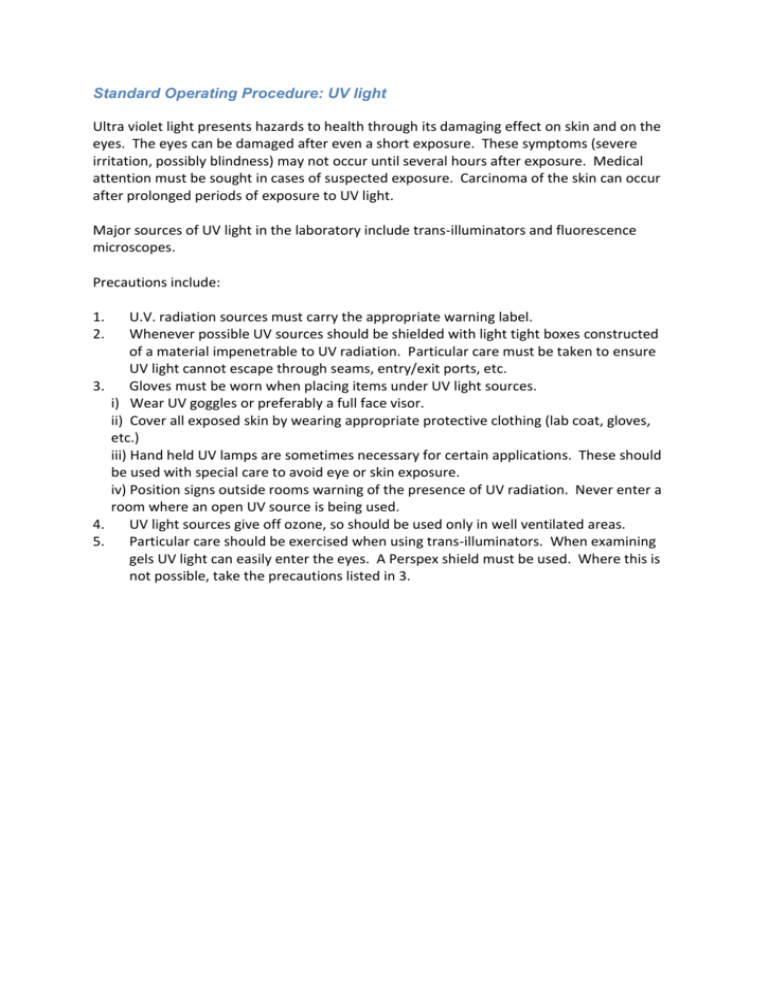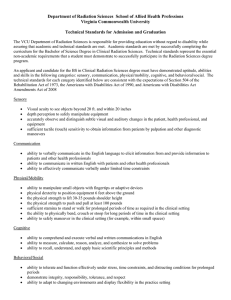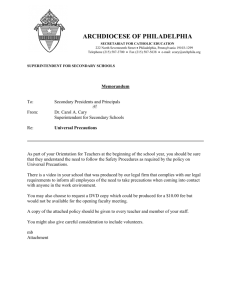Standard Operating Procedure: UV light
advertisement

Standard Operating Procedure: UV light Ultra violet light presents hazards to health through its damaging effect on skin and on the eyes. The eyes can be damaged after even a short exposure. These symptoms (severe irritation, possibly blindness) may not occur until several hours after exposure. Medical attention must be sought in cases of suspected exposure. Carcinoma of the skin can occur after prolonged periods of exposure to UV light. Major sources of UV light in the laboratory include trans-illuminators and fluorescence microscopes. Precautions include: 1. 2. U.V. radiation sources must carry the appropriate warning label. Whenever possible UV sources should be shielded with light tight boxes constructed of a material impenetrable to UV radiation. Particular care must be taken to ensure UV light cannot escape through seams, entry/exit ports, etc. 3. Gloves must be worn when placing items under UV light sources. i) Wear UV goggles or preferably a full face visor. ii) Cover all exposed skin by wearing appropriate protective clothing (lab coat, gloves, etc.) iii) Hand held UV lamps are sometimes necessary for certain applications. These should be used with special care to avoid eye or skin exposure. iv) Position signs outside rooms warning of the presence of UV radiation. Never enter a room where an open UV source is being used. 4. UV light sources give off ozone, so should be used only in well ventilated areas. 5. Particular care should be exercised when using trans-illuminators. When examining gels UV light can easily enter the eyes. A Perspex shield must be used. Where this is not possible, take the precautions listed in 3.











